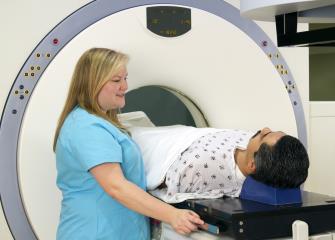

Magnetic resonance imaging (MRI) allows us to see inside the human body with amazing detail, by using magnets and radio waves. However, to be able to study the mind and its network, we need to be able to look inside people’s brains. If we can understand how the brain’s structure and chemical makeup lead to healthy function, then we can start to understand brain disorders. Therefore, neuroscientists who want to understand mental health disorders and how we can all stay mentally healthy seek to examine the mind network. This change to the underlying structure and chemical makeup of our brains can affect the way we can cope with the normal stresses of life, our productivity, and our overall wellbeing. In mental health disorders, such as depression and anxiety, we often see a disruption to the mind network ( Figure 1B). The mind network, the way it sends information and its underlying structure determine our mental health.

This disruption can affect the way the mind network sends, receives, or interprets messages. (B) In mental health disorders, such as depression and anxiety, we often see a disruption to the mind network. (A) Flow of information, our emotions, and our thoughts can be thought of as a social network where, instead of messages being sent between friends on social media, information is being sent to different parts of the brain along neurons.In fact, a successful or effective mind network allows us to be cognitively (our ability to carry out mental activities), emotionally, and socially healthy. The mind’s network relies on the underlying structure and chemical makeup of the brain to function successfully. This flow of information ( Figure 1A) can be thought of as a social network where, instead of messages being sent between friends on social media, information is being sent to different parts of the brain along neurons. Our minds constantly control the flow of information-our memories, thoughts, emotion, and imagination. The brain is the physical place where the mind resides. However, our brains not only regulate our bodies and our movements but are also the home of our minds. The brain interprets information and both releases chemicals and sends electrical signals (messages) to cause the body to respond. The Brain: Home of the MindĪs the center of the nervous system, the brain makes sense of the information from our surroundings. This article explains the physics of MRI and how we use it to generate images of our brains in order to investigate how the mind works. To do this, we use a technique called magnetic resonance imaging (MRI) to image inside the living brain, to examine its function and structure. Scientists interested in studying the brain and mental health disorders (called neuroscientists) seek to understand how the architecture and biochemical makeup of the brain differs in health and disease. A change to the structure or biochemical makeup of our brains can affect our mental health, the way we cope with the normal stresses of life, our productivity, and our overall well-being. Our ability to interpret and process information and regulate emotion is determined by the structure and chemical makeup of our brains.


 0 kommentar(er)
0 kommentar(er)
